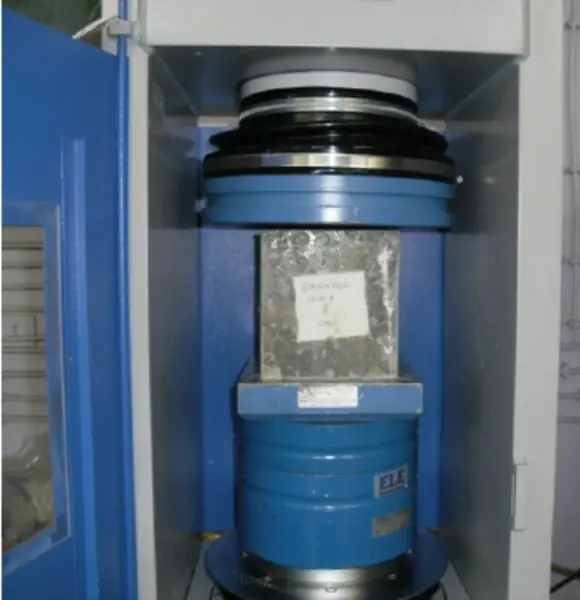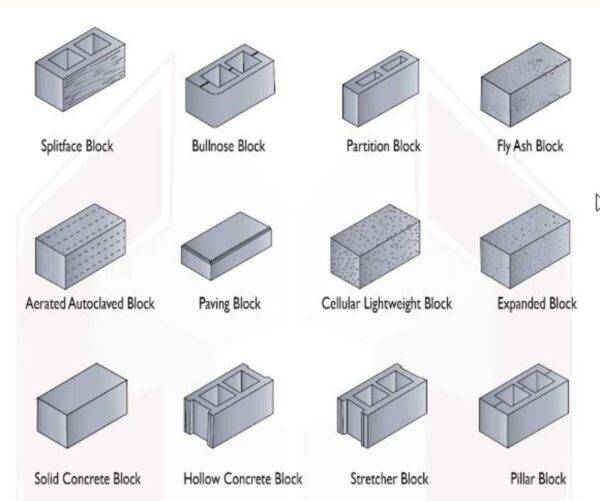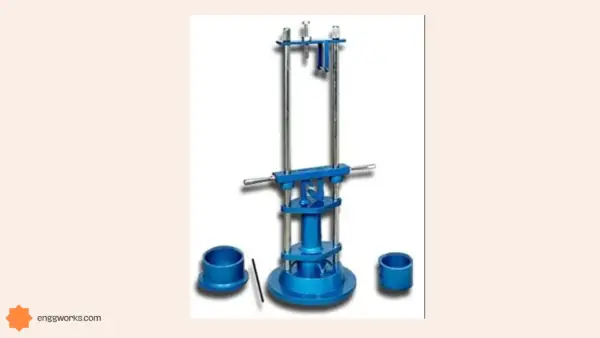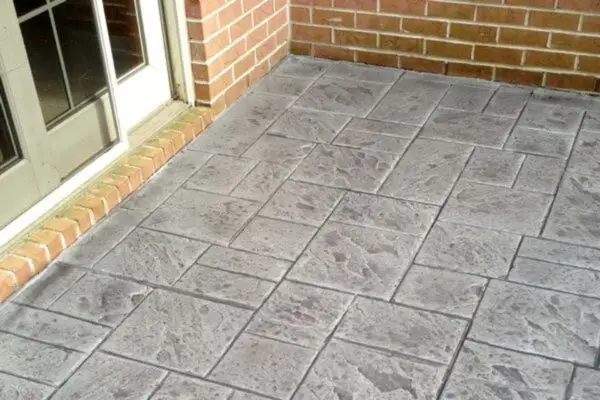Segregation of concrete is one of the most common yet critical problems that affects the strength, durability, and overall quality of concrete structures.
In simple terms, segregation is the separation of concrete ingredients into distinct layers, which leads to weak zones and reduces structural integrity.
For civil engineers and construction professionals, understanding the causes of segregation in concrete wall pours, its prevention, and how to correct segregation of concrete during construction is vital.
To prevent segregation, the concrete should not be thrown from a height of more than 1.5 meters. Exceeding this height can lead to the separation of heavier aggregates from the cement paste, resulting in a weak and non-homogeneous mixture.
This post explores the meaning of concrete segregation, its causes, preventive measures, correction methods, and best practices in concrete placement techniques that avoid segregation for producing high-quality, durable concrete.
Segregation of Concrete: Its Meaning, Types, Causes, Prevention
Segregation in concrete is the phenomenon where the constituents, such as coarse aggregate, fine aggregate, and cement paste, separate during mixing, transportation, placing, or compacting.
It is often observed as coarse aggregates settling at the bottom and cement paste moving upward, or aggregates clustering in one region.
In essence, it is the separation of cement paste and aggregate in grout or plastic concrete.
The types of segregation include:
- Aggregate segregation: Coarse aggregates settle at the bottom due to gravity, especially when concrete is dropped from excessive heights (segregation of aggregate due to drop height).
- Paste-aggregate separation: Cement paste separates, leaving gaps around aggregates, affecting bonding.
- Bleeding or paste separation: Water rises to the surface, creating weak zones and surface cracks.
Segregation of concrete prevention is fundamental in structural engineering, as severe segregation can compromise concrete density, leading to honeycombing, cracks, and eventual failure.
Causes of Segregation in Concrete
Segregation occurs due to multiple reasons, often linked to poor handling or mix design issues. Major segregation of concrete reasons includes:
- Improper mix proportioning—Excess water or oversized aggregates lead to separation.
- High drop height during pouring—Maximum drop of concrete before aggregate separation is generally recommended at 1.5 meters. Beyond this, segregation of concrete due to drop height becomes highly likely.
- Poor concrete consolidation and segregation in construction—Inadequate compaction or the wrong use of vibrators causes separation.
- Long-distance transportation—hauling buckets on trucks for a considerable distance—can cause segregation of the concrete. True or false? True. Long-distance movement without remixing leads to heavy aggregates settling.
- Use of poorly graded aggregate—Non-uniform aggregate grading creates voids, leading to paste separation.
- Improper formwork—sharp corners, poor sealing, and inadequate slope—contributes to non-uniform deposition, which must be corrected by knowing how to address it to make segregation-free concrete.
- Self-Compacting Concrete (SCC) issues – Without proper viscosity-modifying admixtures, SCC experiences paste-aggregate separation. Knowing how to stop SCC concrete from segregating is essential when using flowable mixes.
Difference Between Segregation and Constriction
Although segregation and constriction are often confused, they are not the same.
| Property | Segregation of Concrete | Constriction in Concrete |
|---|---|---|
| Meaning | Separation of ingredients into layers | Narrowing/blockage in flow during placement |
| Cause | Gravity, poor handling, high drop height | Improper formwork, reinforcement congestion |
| Effect | Weak zones, honeycombing, poor density | Delayed placement, voids, reduced workability |
| Prevention | Proper handling, controlled drops, mix design | Adequate spacing, correct formwork, vibration |
Understanding this difference helps avoid both segregation and placement issues.
Maximum Pouring Height of Concrete to Prevent Segregation
To prevent segregation on concrete pours, the maximum pouring height of concrete to prevent segregation is specified. Usually, engineers restrict concrete free fall to 1.0 to 1.5 meters.
Beyond this segregation height, coarse aggregates lose cohesion with cement paste. For higher pours such as tall columns and walls, chutes or tremie pipes must be used to reduce concrete segregation vs. honeycomb effects.
Effects of Segregation Concrete in Structures
If left unchecked, segregation results in:
- Reduced compressive strength
- Honeycombing due to concrete segregation vs honeycomb relationship
- Voids and surface cracks
- Poor durability from ingress of water and chemicals
- Uneven finishes on walls and slabs
- Major repair and maintenance costs
Pictures of segregated concrete cores often provide visual evidence, with coarse aggregate clusters dominating certain sections and paste films covering the rest.
Concrete Segregation Test and Visual Stability Ratio
In laboratory and site tests, engineers use different techniques to evaluate segregation.
For self-compacting concrete (SCC), the visual stability ratio (h₁/h₂) is important. This measures the uniformity of spread in a slump flow test:
- Ratio close to 1.0 → High stability and minimal segregation
- Lower ratios → High risk of paste-aggregate separation, poor cohesion, and severe segregation
As per EFNARC (2005): To assess uniformity and resistance to paste-aggregate segregation during flow, the visual stability ratio (h₁/h₂) was measured. This involves recording the vertical thickness of concrete at two opposite points of the spread circle immediately after the slump flow test. A ratio close to 1.0 indicates uniform spread and high stability, whereas lower ratios imply segregation and poor cohesion.
Such segregation tests help predict whether SCC will remain homogeneous or require correction.
Concrete Placement Techniques that Avoid Segregation
To avoid segregation of semi-dry concrete or flowable SCC, follow these concrete placement techniques:
- Minimize drop height by using chutes, pipes, or tremies.
- Place in layers instead of pouring large masses together.
- Use controlled vibration for compaction to avoid poor concrete consolidation and segregation in construction.
- Ensure proper grading of aggregates.
- Maintain an optimum water-cement ratio to avoid fluidity-based separation.
- Properly design how to repair formwork to make segregation-free pouring.
Following these rules aligns with segregation rules in engineering to ensure stability.
How to Correct Segregation of Concrete
Despite best efforts, segregation may sometimes occur. The question arises: how to correct concrete when segregation happens?
- For fresh concrete: Remix materials at the site and adjust water content. If separation when pouring concrete occurred, remix using vibrators or churners before setting.
- For self-compacting concrete: Add viscosity-modifying admixtures to resist paste-aggregate separation. This addresses how to stop SCC concrete from segregating.
- For hardened concrete:The procedure depends on severity. Repair honeycombed zones by insulating shuttering, injecting grout, or using epoxy. This is part of the concrete repair methodology for segregation.
- For surface defects: Proper leveling, patching mortars, or overlays restore the finish.
Thus, learning how to correct segregation of concrete is crucial for field engineers.
Concrete Repair Methodology for Segregation
When hardened concrete shows segregation on concrete walls or blocks, the following repair methodologies are adopted:
- We chip the defective zones to remove any loose material.
- Applying bonding agents is necessary to restore adhesion.
- Microfine cement slurry is used to grout paste-aggregate separation voids.
- Overlays and patch mortars to restore surface finish.
- Epoxy injections are utilized for structural restoration.
Such methods restore structural integrity and durability when defects cannot be avoided initially.
Concrete Segregation Index
For advanced analysis, engineers calculate the concrete segregation index during quality checks. This indicator evaluates settlement, bleeding, or aggregate separation.
A higher segregation index implies poorer cohesion and a need for redesign. It helps identify high concrete segregation due to aggregate inconsistencies in the mix design.
Special Cases in Segregation
- Self-Compacting Concrete (SCC)—Avoid segregation by optimizing mix viscosity and controlling flow spread. Learning how to stop SCC concrete from segregating is critical for modern construction.
- Floor Aggregation – Improper leveling during slab concreting leads to uneven aggregate concentration.
- Segregation Techniques – Temporary concrete barrier segregation is sometimes applied to redirect flow in larger pours.
- Material mishandling—Some terminology, like “What is a concrete arsefall?” often refers to lumps from improper mixing or poor batch handling.
What Happens if a Larger Aggregate Settles at the Top?
A common source of confusion on-site is the effect of larger aggregate settling at the top of concrete blocks.
Normally, aggregates should sink. However, poor mix cohesion sometimes leads to reverse floating of large stones, creating voids beneath.
This form of severe segregation weakens structural bonding.
Avoiding Aggregate Segregation in Transportation
While transporting concrete using dumpers, trolleys, or pumps, it is vital to avoid aggregate segregation by:
- Ensure that the hauling distance is kept to a minimum.
- Covering the concrete during transport is a crucial step.
- Using agitator trucks to remix concrete during long hauls helps avoid segregation.
Keep in mind that transporting concrete in buckets on trucks over long distances can lead to segregation of the materials—this is true!
Although related, segregation and honeycombing differ:
- Concrete segregation is the initial cause (separation of materials).
- Honeycombing is a visible effect characterized by a void-filled surface and a lack of paste.
Thus, concrete segregation vs. honeycomb demonstrates cause-and-effect in structural defects.
Segregation Prevention Checklist
To conclusively prevent segregation of concrete:
- Maintain the correct concrete configuration in the formwork.
- Control slumps between 75 and 125 mm unless SCC is designed.
- Avoid submergence in cement water during curing that may wash out cement paste.
- Observe guidelines for the maximum pouring height of concrete to prevent segregation.
- Strictly follow segregation rules in engineering.
Key points about segregation in concrete:
- It results in weak zones within the concrete, leading to inferior quality.
- Segregated concrete lacks strength and durability.
- It can occur during production, transportation, placement, or curing.
- IImproper mix proportioning, handling, and consolidation can increase the risk of segregation.
- VVisual inspection can detect segregation in hardened concrete.

Difference Between Segregation, Bleeding, and Swelling
Bleeding and swelling are two other phenomena related to segregation, but they differ in several aspects.
Segregation
- Physical separation of aggregates and cement paste occurs during the segregation process.
- This process results in the formation of areas that are rich in aggregates and cement paste.
- The entire concrete section is affected by this process.
Bleeding
- Water emerges on the surface, lacking aggregates or cement.
- Only the top layer of the concrete is affected.
- This results in the formation of a weak and porous surface of concrete.
Swelling
- The absorption of water by dry aggregates, which possess a specific gravity, leads to their expansion.
- This phenomenon primarily takes place when the concrete is in its plastic phase.
- This process can cause bulging and distortion in the concrete structure.

Honeycombing and segregation:
- The term refers to the existence of voids and cavities in both the surface and body of concrete.
- Caused by inadequate vibration or compaction during concrete placement.
- This condition results in visible honeycomb-like holes and an uneven surface finish.
- This reduces the strength and durability of the concrete against water ingress.
- It can be repaired by patching up voids or reprofiling the surface.
Segregation in Concrete:
- Concrete segregation refers to the physical separation of its ingredients, such as aggregates and paste.
- This causes a non-uniform composition, resulting in areas that are rich in aggregates and others that are rich in paste.
- This issue is caused by variations in particle density and size, along with improper mixing.
- The integrity and properties of the concrete are compromised throughout the affected section.
- Unlike honeycombing, hardened concrete is difficult to visually detect.
- The severity of the damage may necessitate a comprehensive repair.

Key Differences:
- Honeycombing is a surface defect, while segregation affects the entire volume of concrete.
- Honeycombing is visible, while segregation is often internal and not easily seen.
- Segregation is more severe because it negatively impacts the overall quality and longevity of concrete.
- Honeycombing can be fixed with localized repair, but segregation may require extensive replacement.
In summary, honeycombing is a localized surface defect, while segregation leads to non-uniform composition throughout the concrete. Proper placement, vibration, and curing prevent both segregation and honeycombing.
Causes of Segregation in Concrete
There are several factors during concrete production, transportation, placement, consolidation, and curing that induce segregation:
Mix Design Issues
- Excess water content results in a fluid concrete mix that is prone to segregation.
- A high proportion of coarse aggregates compared to fine aggregates is important.
- Inadequate paste volume prevents proper coating of all particles.
- The aggregates are not graded properly. Gap-graded mixes segregate easily.
Handling Problems
- Excessive mixing causes breakdown of aggregates and paste.
- Overvibrating breaks the bonds between particles.
- Improper pumping pressure can cause agitation in the concrete mix.
Workmanship Errors
- Long-distance transportation without agitation.
- Uncontrolled free-fall placement from height.
- Delayed compaction after spreading concrete.
Other Factors
- Harsh weather conditions, including rain, wind, and heat, can also lead to delayed compaction.
- Congested reinforcement restricts concrete flow.
- The nature of ingredients, including their shape, texture, and the absorption of aggregates, can also contribute to delayed compaction.
Types of Segregation in Concrete
Segregation in concrete is categorized into three main types:
External Segregation
Additionally, this process is referred to as macro- or gross segregation. Visible separation of coarse aggregates from cement mortar occurs.
This process leads to the formation of aggregate-rich and paste-rich regions at various locations. This process typically takes place during the transportation or placement phase.
Internal Segregation
Microscopic segregation within it cannot be visually detected, but it affects strength and permeability. its strength and permeability. This occurs either during the mixing process or during the initial stages of hyd Bleeding causes this type of segregation.
Water rises to the top surface without solid particles, leading to a weak and porous concrete surface. Causes a weak and porous concrete surface.
How to Prevent Segregation in Concrete
To prevent segregation, limit the maximum height of concrete placement and use appropriate mixing and transportation techniques.
By understanding the segregation’s concrete definition and implementing best practices, contractors can ensure the production of high-quality, durable concrete structures, free from concrete bulging.
Careful mix design and diligent construction practices are required to avoid segregation in concrete.
- Maintain optimal water content and water-cement ratio.
- Include both coarse and fine aggregates in appropriate proportions.
- Use rounded, well-graded aggregate segregation-reducing admixtures.
- Avoid excessive vibration and handling during the placement and transportation of concrete.
- Place the concrete systematically in layers and compact it promptly.
- Ensure proper curing to maintain the Various test methods are used to evaluate the degree of segregation in both fresh and hardened concrete:
Various test methods are provided to evaluate the degree of segregation in both fresh and hardened concrete:
Fresh Concrete Tests
- Slump test—Height versus diameter of slumped concrete provides an indication of segregation.
- Penetration resistance—Measures ease of penetration of a probe in a concrete layer.
- Column techniques—A concrete column is sawed axially to examine aggregate distribution.
- Wet screening—The washed sample is sieved to determine proportions of coarse/fine aggregates.
Hardened Concrete Tests
- Core examination—visually inspecting cut cores or sawn slab sections.
- Petrographic examination—microscopic investigation to identify aggregate-rich and paste-rich areas.
- Crosshole sonic logging measures sonic pulse velocity through concrete to identify defects.
- Impact-echo testing detects flaws based on the presence of segregation, which has detrimental effects on the structural performance of concrete.
Aggregate-rich zones are porous and prone to cracking because they contain less binder content.
- Aggregate-rich zones are porous and prone to cracking because weak transition zones form between areas of segregated concrete.
- Weak transition zones are created between areas of segregated concrete.
- The initiation and propagation of cracks increase due to a non-uniform composition of the concrete.
- The initiation and propagation of cracks increase due to a non-uniform composition of the concrete.
Proper tests like core strength evaluation, Schmidt rebound hammer, ultrasonic pulse velocity measurement, etc. should be done to assess the strength loss in segregated concrete.
Repair: Apply pressure grouting of low-viscosity epoxy resins to fill up the pores.
Applying polymer bonding agents to the affected areas enhances the bond between those areas and the steel reinforcement, and additional formwork may be required before pouring fresh concrete.
- Applying polymer bonding agents to the affected areas enhances the bond between those areas and the surrounding surface. Coatings, such as polymer-modified cementitious mortars, can be applied.
- Proper care during construction is essential to prevent the need for repairing segregated concrete.
- Surface coatings, such as polymer-modified cementitious mortars, can be applied.
PRemission is better than cure. PProper care during construction is essential to prevent the need for repairing segregated concrete.
Standards for Assessing Concrete Segregation
Various standards and codes have specified acceptance criteria for segregation in concrete:
- ACI 117—aggregate distribution needs to be within 15% variation.
- ASTM C1567—Segregation severity is visually categorized.These standards are based on extensive research and encompass various evaluation methods for segregation.
- Adherence to the acceptance limits ensures the production of good-quality concrete.
- sting, and remediation of segregated co The standard slump test for concrete indirectly measures its resistance to segregation.
During the test, two diameters of the slumped concrete are measured: the maximum spread and the diameter that is perpendicular to it.
A large difference between the two diameters indicates a potential for segregation.
The ratio of the two diameters is referred to as the slump difference, which serves as an index parameter. The slump difference should be less than 30 mm.
A large difference between the two diameters indicates a potential for segregation. The ratio of the two diameters is referred to as the slump difference, which serves as an index parameter.
For beneficial cohesion:
- The lump difference should be less. Concrete pump: steady pumping action ensures a homogeneous flow.
If segregation is suspected, further direct testing of the slumped concrete or trial mixes should be conducted.
Tools to Reduce Segregation of Concrete
Several tools help minimize segregation during concrete transportation and placement:
- Concrete pump: steady pumping action ensures a homogeneous flow. Reduces handling.
- Tremies—long pipes through which concrete is lowered into deep formwork without dropping.
- Special chemical admixtures enhance the cohesion of concrete and help prevent segregation.
- Viscosity-modifying admixtures (VMA) increase the viscosity of concrete and prevent its components from separating.
- These are similar to tower cranes, but they are fully enclosed to prevent material segregation.
Controlling Concrete Segregation Using Admixtures
Segregation-reducing admixtures (SRA) function similarly to viscosity-modifying agents (VMAs), but they differ in their mechanisms of action.
- Modifying admixtures (VMA) increase the viscosity of concrete and prevent itsThe correct type and dosage of these admixtures are essential for optimizing performance.
- These admixtures improve the flow characteristics and stability of concrete.
- Segregation of concrete is more than just a site nuisance; it is a critical issue that can compromise the strength, durability, and safety of structures.
- Fibers—Micro polypropylene fibers distribute evenly and bind the concrete.
The correct type and dosage of admixtures are essential for optimizing the performance of concrete. Proper field trials are recommended before actual use.
Conclusion
Segregation of concrete is more than just a site nuisance; it is a critical issue that can compromise the strength.
By adopting quality concrete placement techniques that avoid segregation, engineers can ensure durable, safe, and cost-effective construction while preventing issues related to floor aggregation, severe segregation, and the hassles of concrete repair methodologies later.
By ensuring proper design, mixing, transportation, placement, vibration, and curing, one can achieve segregation-free concrete that meets its intended design life.
By adopting quality concrete placement techniques that avoid segregation, engineers can ensure durable, safe, and cost-effective construction while preventing issues related to floor aggregation, severe segregation, and the hassles of concrete repair methodologies later.






